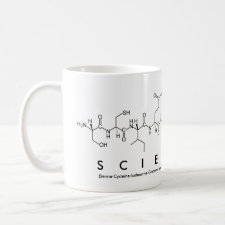
Authors: Rahangdale D, Archana G, Kumar A
Article Title: Molecularly imprinted chitosan-based adsorbents for the removal of salicylic acid and its molecular modeling to study the influence of intramolecular hydrogen bonding of template on molecular recognition of molecularly imprinted polymer.
Publication date: 2016
Journal: Adsorption Science & Technology
Volume: 34
Issue: (7-8)
Page numbers: 405-425.
DOI: 10.1177/0263617416659490
Alternative URL: http://journals.sagepub.com/doi/full/10.1177/0263617416659490
Abstract: The present study reports the synthesis of molecularly imprinted chitosan-based adsorbents using 4-hydroxy benzoic acid (4HBA) as a dummy template for the selective extraction and analysis of salicylic acid (SA) using suspension polymerization method. Dummy template strategy is useful when templates like salicylic acid exhibit intramolecular hydrogen bonding. The synthesized adsorbents were characterized by Fourier transform infrared spectroscopy (FTIR) and scanning electron micrograph (SEM). The adsorption capacity of the adsorbents was investigated as a function of time, concentration of analyte and mass of adsorbent employed and was found to be 500.96 μmol g-1 for the chitosan-based 4-hydroxy benzoic acid molecularly imprinted polymer (4HBACTSMIP), 221.2 μmol g-1 for the salicylic acid MIP (SACTSMIP), 220 μmol g-1 for the non-imprinted polymer (NIP), 149.7 μmol g-1 for chitosan (CTS) and 60.63 μmol g-1 for the granular activated carbon (GAC). The specific binding capacity of 4HBACTSMIP for salicylic acid was found to be 280.96 μmol g-1. The change in the Gibbs free energy (?G) for the template–monomer complexes formed between the templates and the functional monomer was computed using density functional theory (DFT) to interpret the nature of the interactions between them and to compare their stabilities. A systematic investigation of the molecular recognition abilities of the synthesized adsorbents was carried out using Freundlich (F) adsorption isotherm model. The binding parameters obtained from the F model demonstrate that 4HBACTSMIP exhibited higher specific molecular recognition ability towards salicylic acid. The adsorption ability of SACSTMIP was same as that of NIP due to intramolecular hydrogen bonding present in salicylic acid molecule leading to low imprinting effect. The results are supported by molecular modeling studies and the selectivity studies.
Template and target information: 4-hydroxybenzoic acid, 4HBA, dummy template, salicylic acid, SA
Author keywords: chitosan, molecularly imprinted polymer, dummy template, salicylic acid, molecular modeling, 4-hydroxy benzoic acid, Density functional theory, selectivity



Join the Society for Molecular Imprinting

New items RSS feed
Sign-up for e-mail updates:
Choose between receiving an occasional newsletter or more frequent e-mail alerts.
Click here to go to the sign-up page.
Is your name elemental or peptidic? Enter your name and find out by clicking either of the buttons below!
Other products you may like:
 MIPdatabase
MIPdatabase









